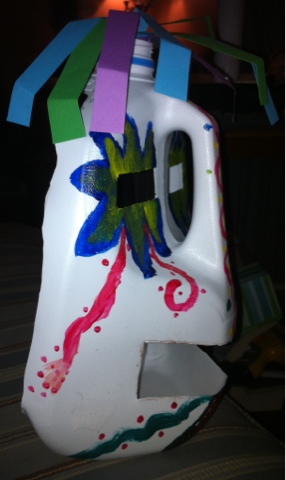A key concept learned from The Lowdown on Lowbrow video was
that there was a classification of art called Lowbrow, I had never heard the
term in relation to art pieces.
The key concept I took from the Tate Modern is how you can
mix genres and movements to use as a way to show the differences between the
two and also to force the viewer to find a parallel. I also found it interesting that they have
combined genres as a way to force the viewer to experience all types of art not
just those that they are familiar and comfortable with.
A key concept I took from Bones of Contention was that museums
were now being asked to turn over the Indian remains so they could be buried by
their native people. I had no idea there
was such a controversy.
The key concept I learned from the video on Philippe de Montebello, Director of
the Metropolitan Museum of Art was the process it takes to acquire pieces by
large museums. I also found the section on conservation to be
extremely interesting. If these pieces aren’t cared for properly
their investment will be worthless. Each
material requires a different form of conservation and protection.
2. Do the videos relate to the creation of your Art
Exhibition project? If yes, explain how. If no, explain why not.
The Lowdown on Lowbrow did not relate or help in the
creation of my exhibit, the imagery is so extremely different from the style or
look I am going for.
Yes, the Tate Modern has inspired me to think outside the
typical boxes of the theme I have chosen and see if there is a way to broaden
the viewer’s understanding of my theme.
I do not feel this video related to my art exhibit project,
there was no reference to creating an exhibit; only that there were
archeological reserves of the Indian remains at the museums. The only reference to an exhibit came at the
very end when the Native Americans helped to create the exhibit after the repatriation
was complete.
This video doesn’t exactly relate to our project but was
close enough that I found it interesting to watch and gained a better
understanding of just what goes into running a large museum.
3. What is your opinion of the films? Do they add depth to
understanding of the art concepts you practiced while creating your curation
project?
While I found this interesting in the struggle that these
artists have had in being taken seriously, other than that, I didn’t find this
useful in helping me create my exhibit.
The Tate Modern was done very well; I learned a lot from
this video and will use it to create my exhibit. Yes this added a great deal of understanding
of exhibiting and how you can intrigue the audience by forcing them out of
there comfort level.
I felt the video on Indian bones was a waste of my time; I
did not get a better understanding of creating an art exhibit.
The video on the Met was great, I enjoyed seeing the career
of Philippe de
Montebello and seeing how he works with his different curators. I also found it interesting to see some of the
different pieces that have been shown in our text as examples, as they are
displayed in the museum. I don’t know
whether this adds to my understanding that I will use to create my
exhibit.
Overall though, I found the time it took me to
watch these videos, nearly four hours, is a lot of time and that time could have been better spent researching for pieces for my exhibit,
putting together my interpretation of the pieces or working on the lay out of
the PowerPoint slideshow.


















